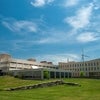Autism education center founder details Southborough expansion plan
 Image courtesy of the the New England Center for Children
A rendering shows how the exterior of the New England Center for Children in Southborough will appear when construction is complete next year.
Image courtesy of the the New England Center for Children
A rendering shows how the exterior of the New England Center for Children in Southborough will appear when construction is complete next year.
To the average person, the New England Center for Children may appear a non-descript education facility on the westbound side of Route 9 in Southborough.
The name itself reveals nothing about the 40-year-old organization’s mission to provide education and research in autism to improve intervention — and therefore, outcomes for children — worldwide.
That’s a branding decision that founder Vincent Strully still questions today. Some years ago, the center’s board of directors decided to forgo inclusion of the word “autism” in the organization’s name for fear of stigmatizing the children who receive services in its day and residential programs there. At this point, Strully said the New England Center for Children, or NECC, has gained notoriety as a top authority on autism treatment, so changing the name doesn’t make sense.
“We wanted to be to autism what the Mayo Clinic is to medicine and the Dana-Farber is to cancer,” Strully said of the vision for the center when it opened its doors, originally in Taunton, 40 years ago last week.
More space for programs, research
That quest continues today, with the NECC’s expansion project that’s now underway. The purpose of the project, which will cost between $11 million and $12 million, is to create new space to house research activities and graduate education programs for students pursuing advanced degrees in autism intervention, the largest program of its kind, according to Strully, while freeing up 10,000 square feet of space for the autistic children who attend programs at NECC. That space will become a student activity center, which is dedicated space the center has lacked.
The newly constructed portion of the center will become the main entrance, and is slated to open in August 2016. The project has been almost fully funded, thanks to a capital campaign that raised $10.9 million, Strully said.
Royal ties
But it’s not just through fundraising that NECC, a nonprofit, private organization, has been able to thrive while investing in its programs, buildings and autism education intellectual property. A unique relationship with the City of Abu Dhabi in the United Arab Emirates has also buoyed NECC’s Massachusetts location.
In 1997, members of the royal family there were referred to treatment at NECC after receiving autism diagnoses. This sparked the family’s keen interest in the organization, according to Strully.
Eventually, the royal family commissioned the construction of an NECC campus in Abu Dhabi that today serves its population. The $150 million center is state of the art, even eclipsing the Southborough facility, Strully said. Today, 160 of NECC’s nearly 1,150 employees work in Abu Dhabi.
“That project really supports the New England Center here … It’s a very generous project and it directly helps us here at a time when public funding has been relatively flat in the U.S.,” Strully said.
As Strully pointed out, countries everywhere have a growing stake in investing in autism research and intervention. Studies show that early intervention for toddlers, as early as 16 months old, can have a profound impact on how a child’s autism is expressed. While there is no cure for the disorder and a cause hasn’t been found, Strully said that frequently, such children shed their autism diagnoses after no longer exhibiting symptoms that meet the criteria.
An emerging problem
Meanwhile, rates of autism are increasing in all parts of the world. Strully said part of this may be attributed to developing nations having more resources to recognize and treat autism spectrum disorders. But he said rising prevalence isn’t tied completely to that. In the U.S., autism is the fastest-growing developmental disability, with the number of diagnoses increasing between six and 15 percent each year between 2002 and 2010, according to the Autism Society.
“We just need to do a lot more with kids who have this,” Strully said.









0 Comments